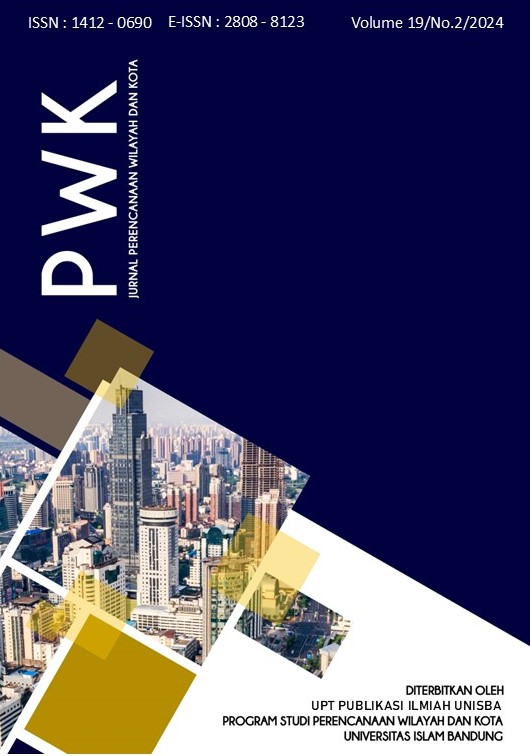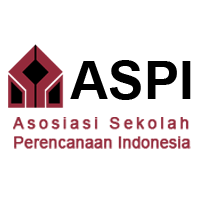Characteristics of Ketapang Urban Aquaculture as a Tourism Destination in Tangerang Regency, Banten Province
DOI:
https://doi.org/10.29313/jpwk.v19i2.4948Keywords:
Objek dan Daya Tarik Wisata, Persepsi Wisatawan, Potensi Wisata, Wisata Mangrove, PariwisataAbstract
Abstract. This research is driven by the great potential of tourism in improving the economy and affecting social and environmental aspects in Ketapang Urban Aquaculture (KUA). Although, the number of tourists tends to decrease. Therefore, this study aims to analyze the existing conditions in the main aspects of the 4A (Attractions, Amenities, Accessibility, and Ancillary) and analyze the perception of tourists so that it can be known what aspects need to be improved. The existing condition of KUA was analyzed using the descriptive analysis method, while the perception of tourists was analyzed using the scoring method. Analysis of existing conditions shows that KUA has a unique attraction: a mangrove park integrated with shrimp cultivation areas. KUA has an iconic amenity: the main building is shaped like a horseshoe crab and a Mangrove Plaza. The condition of the road to KUA is quite good and equipped with signposts. Analysis of tourist perception on the aspect of attraction with the highest score (1.97), namely mangrove park attractions, the lowest score (1.24) for mangrove plant education activities. The amenity aspect with the highest score (2.23) is cleanliness, and the lowest score (1.20) is for toilet facilities. The accessibility aspect of the highest score (2.54) is the main gate, and the lowest score (1.36) is the availability of public transportation modes. The ancillary aspect has the highest score (1.77) in management, and the lowest score (1.29) is promotion.
References
Adrianto, L., & Aziz, N. (2006). Valuing The Social-Ecological Interactions in Coastal Zone Management: A Lesson Learned from The Case of Economic Valuation of Mangrove Ecosystem in Barru Sub-District, South Sulawesi Province. Social-Ecological System Analysis. Bremen: ZMT, Bremen University
Buhalis, D., & Law, R. (2008). Progress in information technology and tourism management: 20 years on and 10 years after the Internet — The state of eTourism research. Tourism Management, 29, 609–623. ttps://doi.org/10.1016/j.tourman.2008.01.005
Cooper, C. 1993. Tourism: Principles & Practice. England: Longman Group Limited.
Goodwin, H. (2004). Tourism and Local Economic Development. The International Centre for Responsible Tourism and Scott Wilson Business Consultancy.
Karini, R. S. R. A., & Agustiani, I. N. (2019). The Contribution of Tourism Sector Revenue Revenue to the City of Bandung's Regional Original Revenue (PAD). Tourism Scientific Journal, 4(1), 90-119.
Kurniasari, et al. (2024). Literature Review: The Influence of Social Media on the Tourism Industry from the Perspective of Destinations and Tourists. Indonesian Journal of Tourism Business and Entrepreneurship. 1(1).71-82.
Lingga, K. (2021). Analysis of Tourist Perception of Tourist Attractions at Nembrala Beach, Rote Ndao Regency. Journey: Journal of Tourismpreneurship, Culinary, Hospitality, Convention and Event Management, 4(1), 97-118. https://doi.org/10.46837/journey.v4i1.72
Mali, M. G. (2021). The Role of the Government in the Development of Tourism in the New Normal Era in the Special Region of Yogyakarta Through the Visiting Yogya Application. Destinisia: Journal of DestinisiaHospitality and Tourism. 3(1) 1-11.
Mulyawati, L. S., et al. (2020). Factors of coastal tourism management with DPSIR Analysis (Case study: Tanjung Lesung Special Economic Zone, Pandeglang Regency, Banten Province). ECSOFiM (Economic and Social of Fisheries and Marine Journal), 8(1), 123-137.Nasdian FT. (2006). Community Development. Bogor (ID): Bogor Agricultural University.
Mulyawati, L. S. (2008). Prospects for developing Tourism Areas in the Cilegon-Pandeglang Corridor, Banten Province. Thesis. Graduate School. Bogor Agricultural University.
Tangerang Regency Government (2019). Tangerang Regency Regional Medium-Term Development Plan (RPJMD) for 2019-2023.
Tangerang Regency Government (2023). Tangerang Regent Regulation No. 89 of 2022 concerning Guidelines for the Management of the Ketapang Urban Aquaculture Area, Ketapang Village, Mauk District, Tangerang Regency.
Richardy, M. A. (2014). Analysis of the suitability of tourist demand and supply of Walengkabola Beach tourism objects. Journal of Engineering PWK. 1(1). 519-531.
Risqiani, A., et al. (2020). Analysis of the Conformity of Tourism Demand and Supply of Tourist Attractions in the Thousand Islands National Park (Case on Pramuka Island), Jakarta. Fisheries Science: Indonesian Journal of Fisheries Science and Technology. 16(1). 72-78.
Slovin, E. (1960). Slovin's Formula for Sampling Technique. https://prudencexd.weebly.com
Sugiyono (2012). Quantitative, Qualitative, and R&D Research Methods Bandung: Alfabeta.
Supriadi, B. and Roedjinandari, N. (2017). Tourism Destination Planning and Development: State University of Malang.
Utama, I. G. B. R. (2017). Tourism Marketing. CV. Andi Offset. Yogyakarta.
Widiastini, M.A., et al., (2012). Tourism Marketing Strategy in Buleleng Regency, Bali. Journal of Social Sciences and Humanities, 1 (1):1-19.
Yanti, D., et al., (2024). The Role of Social Media in Promoting Tourism in Bukit Lawang Plantation Village. Journal of Tourism. 11(1): 1-13.
Yoeti, O. (2008). Tourism Planning and Development. Jakarta: PT. Pradnya Paramita.
Zebua, F. N. (2018). Tourist Perception of Dieng Highland Tourist Attraction Facilities in Central Java Province. Unpas Journal of Planology. 5(1) .897-902.
Downloads
Published
How to Cite
Issue
Section
License
Copyright (c) 2024 Ardiatno Yanuadi, Lilis Sri Mulyawati, Indarti Komala Dewi

This work is licensed under a Creative Commons Attribution-ShareAlike 4.0 International License.















